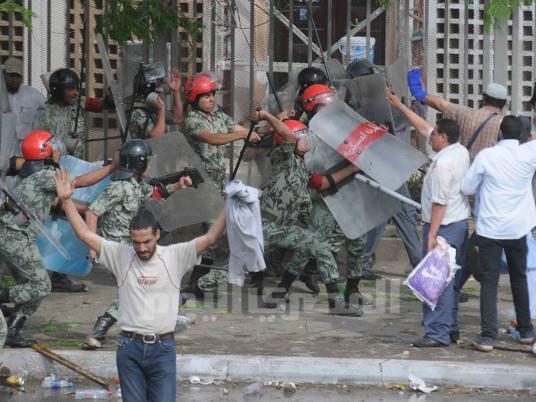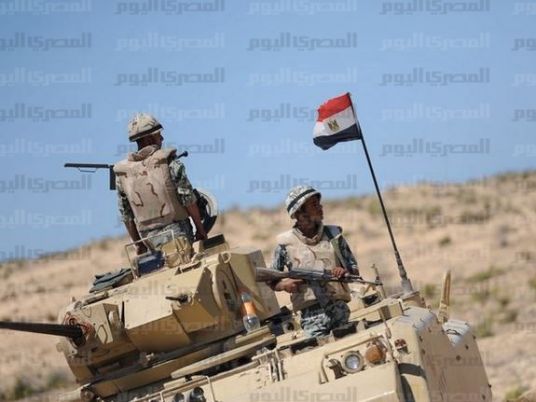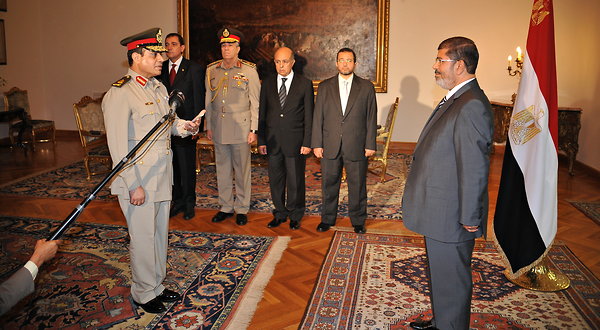
Fighting erupted at a sit in outside the Defense Ministry in Abbaseya early Friday afternoon. Clashes broke out after soldiers snatched several demonstrators, eyewitnesses said.
The clashes between protesters and military police forces followed a week of on-and-off fighting between protesters and attackers in plain clothes. Around 130 people were injured, but there have been no confirmed reports of deaths. The number of people arrested is also unknown.
Ezz Said, a 34-year-old engineer told Egypt Independent that he had been at the scene since 1pm.
"The soldiers were in front of the barbed wire fence. We were chanting against the military regime, but it was peaceful. Around 2:30 they snatched three guys and took them back behind the fence. That was when the people started to throw stones," he said.
Another engineer, Ayman, 25, independently confirmed this version of events. He said that the army initially snatched one demonstrator, and then a further two who objected to the arrest. Both witnesses said that there was no violence before this point.
At around 3:15 pm, soldiers wearing riot gear had retreated some 50 feet behind high coils of barbed wire. Stones had begun to fill the air, mostly thrown from the crowd. But soon, they were flying heavily in both directions. Masses of soldiers took up stones and charged toward the wire fence. At points, less than 5 meters separated soldiers from demonstrators across the wire.
Soldiers also deployed a water cannon, which left a small, incongruous rainbow in the middle of the fighting.
Demonstrators cowered behind rows of makeshift corrugated metal shields. Occasionally a rock from the army's side would find its way through a chink, or catch a protestor unawares, and they would fall to the ground, head bloodied.
One woman, carrying a metal tray on her head, fought off several attempts by male demonstrators to prevent her from going to the front to throw stones. Another woman throwing stones was scolded by a long-bearded sheikh. “If you do it from there you'll hit people at the front! You need to go further forward!”
A 40-year-old airport worker who preferred not to give his name explained why he was demonstrating outside the Ministry of Defense: “When an officer retires, he comes to be my boss”, he said, referring to the common practice of senior officers taking up managerial posts in the public sector, or in military-owned companies. “There is no career for me. They have taken my future. That is the most important thing.”
Others at the sit-in during the clashes explained their motivations to Egypt Independent in more general terms: freedom, the need for civilian government, and democracy.
At 4:10, the first canister of tear gas landed amid the crowd. In a few minutes, a dozen had volleyed overhead, as the crowd stampeded back towards Abbasseya Square. Some tried to fight, but they were mostly unprepared for tear gas, and the rapid retreat had left them with hardly any rocks to throw. Their were urgent calls for “stones, stones” but none came, and the retreat became headlong.
Many fell in the crush, as the white stinging tear gas blended with black smoke from fires hastily started by protestors in a bid to ward of the soldiers' advance. A tea-seller stayed to scramble for his equipment as the stampede broke his stall to pieces. There were sounds of gun fire.
An hour after the tear gas appeared, the crowds had entirely been driven back to Abbasseya Square, and in the subsequent half hour those who had not been arrested fled down the road toward Ramses Square, half-walking, half-running, and the clashes came to an end.
The Supreme Council of the Armed Forces have announced that they will be imposing a curfew on the Abbaseya area from 11:00 pm Friday to 7:00 am Saturday.




